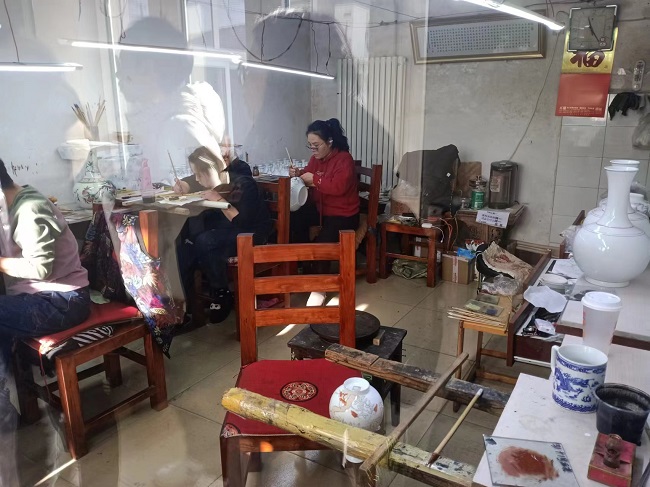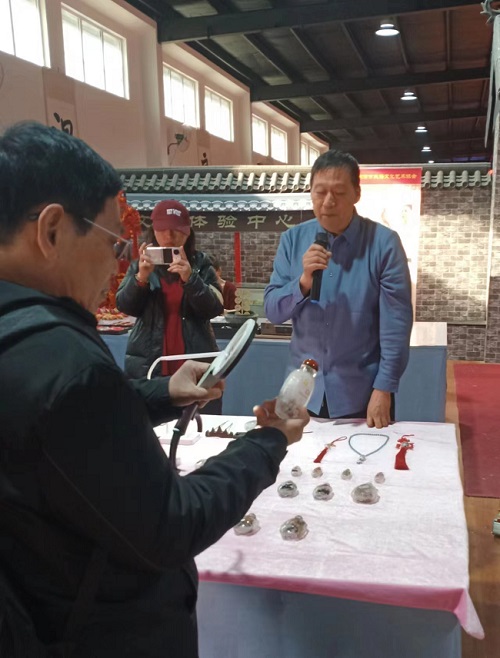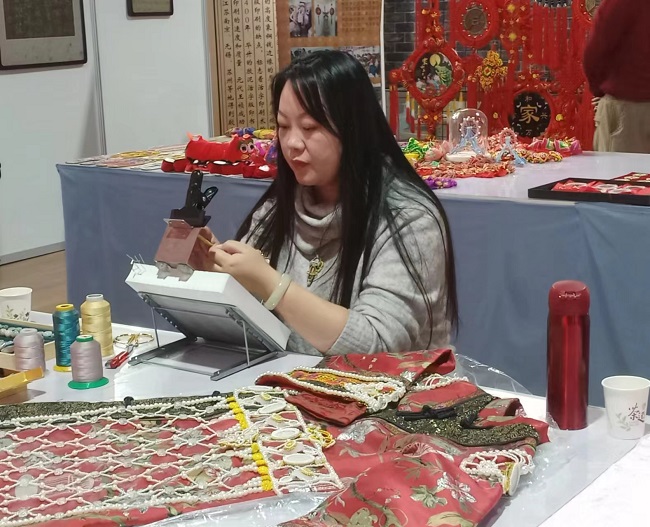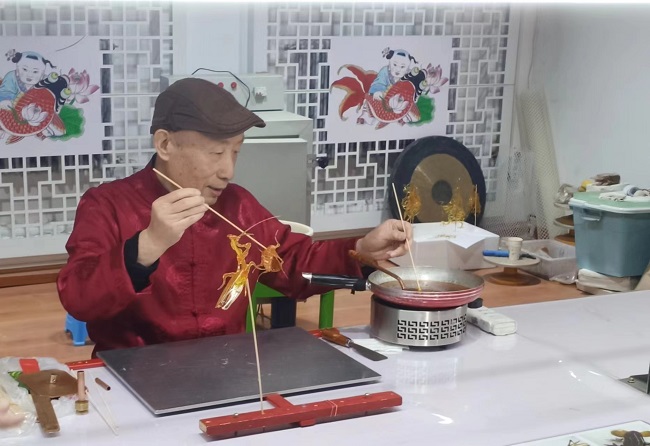Baitansi village in Tianjin's Xiqing prospers through cultural revitalization

The workshop of the intangible cultural heritage project in Baitansi village
In Tianjin's Xiqing district, locals from Baitansi village in Yangliuqing town are crafting delicate famille-rose porcelain. With this Tianjin municipal intangible cultural heritage project, the small workshop yields an annual output value of nearly 10 million yuan (about $1.39 million).
In recent years, Tianjin's Xiqing district has delved deeply into excavating and inheriting intangible cultural heritage of folk customs, integrating it with rural areas to develop the region's distinctive rural industries and increase farmers' income, achieving rural prosperity.
In addition to famille-rose porcelain production techniques, leaf carving, the interior painting of snuff bottles, hand-woven crafts, batik, and other intangible cultural heritage and traditional craftsmanship projects all thrive here.

Wang Xinnian introduces the art of neihua (interior painting).
"This exquisite tiny bottle is a snuff bottle, carrying the unique Chinese intangible cultural heritage of the art of neihua (interior painting)." Wang Xinnian, master of arts and crafts and an inheritor of intangible cultural heritage in Tianjin, unravels the mystery for visiting tourists at the traditional culture research and study base in Baitansi village. With surgical precision, artist produces fantastic images inside a tiny vial.
Meanwhile, at the traditional culture research and study base, Liu Xuehui, an inheritor of leaf carving intangible cultural heritage, introduces visitors to this art form originating from the countryside. “After collecting leaves from poplar trees, magnolias and phoenix trees, I would clean, disinfect, and steam them. The entire process is done in water, using tools to puncture and remove the leaf’s flesh, leaving the veins, and utilizing the natural texture and imperfections of the leaves to create artistic works." On-site, rural landscapes, farming scenes, and calligraphic characters are vividly displayed on these small leaves.

Intangible cultural heritage display site at the traditional culture research and study base in Baitansi village
Throughout the process of promoting deep cooperation between the eastern and western regions, traditional folk arts in Xiqing district also emit a unique charm. "Previously, I guided locals at employment assistance workshops in Xinjiang to learn hand weaving, turning 'fingertip art' into a 'fingertip economy,' helping them to increase their incomes, which was very fulfilling," said Zhao Yuping, a member of the Tianjin Folk Culture and Art Association and an artisan engaged in hand weaving for 18 years, while displaying various Chinese knots.

Intangible cultural heritage display site at the traditional culture research and study base in Baitansi village
As an outstanding traditional culture, intangible cultural heritage serves as a powerful lever for the revitalization of rural areas. It not only provides cultural support for the development of agricultural, educational, cultural, and tourism industries, but also becomes a new channel for villagers to increase their income. Represented by Baitansi village, Tianjin's rural revitalization demonstration villages are revitalizing with new vitality endowed by traditional cultures.
"Our goal is to make Baitansi village a model for modern metropolitan rural revitalization in Tianjin," said Li Feng, a Party secretary stationed in Baitansi village, expressing full confidence in future local development.

Copyright © Tianjin Municipal Government.
All rights reserved. Presented by China Daily.
京ICP备13028878号-35



